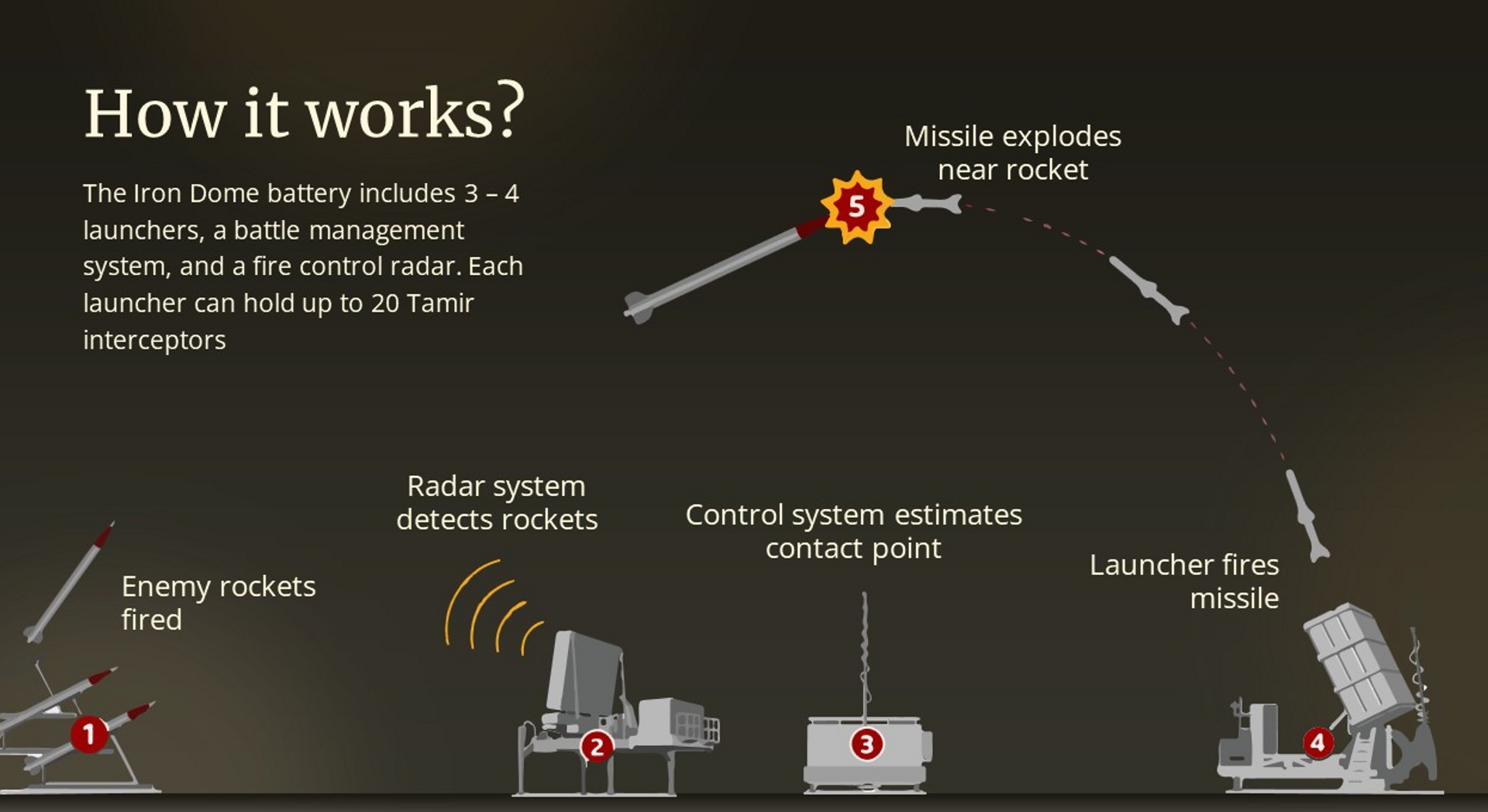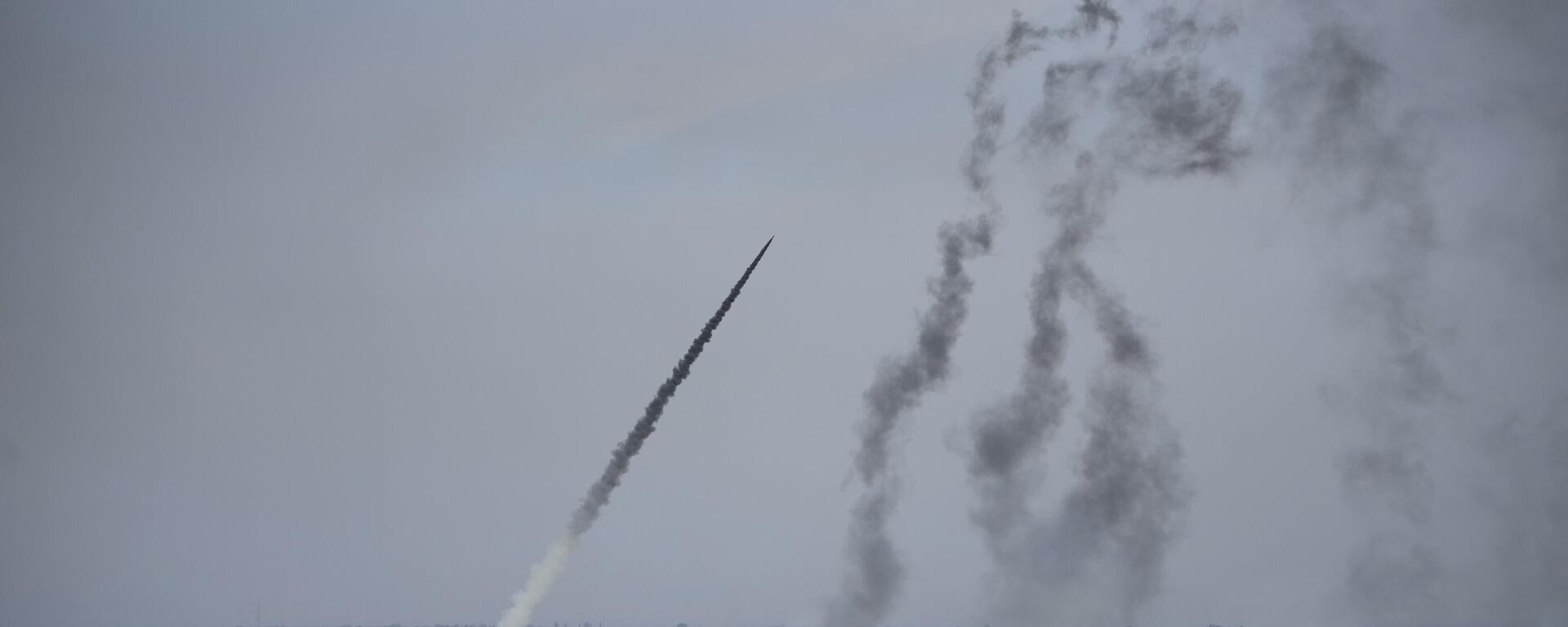What Missiles Does Iron Dome Use?
16:03 GMT 21.10.2023 (Updated: 10:27 GMT 30.01.2024)

© AP Photo / Ariel Schalit
Subscribe
With thousands of rockets having rained down on Israel, the country has relied on the Iron Dome missile defense system - crucial military equipment in its arsenal - to save countless civilian lives over various conflicts in the last decade. How effective is the missile it deploys in intercepting and neutralizing incoming rockets?
The nature of the geopolitical situation around the Middle East has led to several countries looking for air defense systems to ward off threats of massive missile attacks. The heightened risk of threats to national security compels vulnerable nations to seek effective solutions to preempt both external and internal dangers.
On October 7, Israel was struck by a barrage of missile attacks on several targets on its territory by Hamas’ military wing in Gaza. According to reports, many of these missiles evaded the Israeli air defense system, known as the Iron Dome and which is widely touted as the world’s best defense against missiles and rockets.
What is Iron Dome?
The Iron Dome is an efficient, multirole, air defense system on wheels. Precision-engineered, it boasts an impressive capability to identify, assess, and neutralize unmanned aerial vehicles, precision-guided and cruise missiles, counter-RAM (rocket, artillery, and mortar), short-range rockets, as well as 155 mm artillery shells with a range of roughly 70 km.
Genesis of Iron Dome - Background & Development
According to Army Technology, from 2000 to 2008, over 4,000 mortar shells and rockets, mainly Qassams, were launched from Gaza into southern Israel. The range of these rockets increased with the introduction of 122 mm Grad launchers, endangering nearly one million residents in southern Israel.
To address the rocket threats, the Israeli Defense Ministry opted to develop a mobile air defense system in February 2007.
In March 2009, the missile defense system underwent a test without physically intercepting a missile or rocket.
In a July 2009 test by the Israeli Defense Ministry, the missile defense system successfully intercepted several rockets.
In August 2009, the IAF formed a new battalion tasked explicitly with operating the Iron Dome system.
In a January 2010 test, the system intercepted simulated Qassam and Katyusha rocket attacks.
In July 2010, the Iron Dome system's last test showed it could intercept incoming missile threats, while those headed for open fields were not intercepted.
The Israeli Air Force (IAF) deployed the system in March 2011.
Iron Dome Missile System Features
The Iron Dome's effectiveness is underpinned by three critical components:
advanced detection and tracking radar (EL/M-2084 mobile multifunction radar)
battle management and weapon control system (BMC)
specialized missile firing unit (MFU)
Beyond its foundational elements, the Iron Dome touts a vertical launch interceptor, armed with a formidable warhead and precision proximity fuse. This defense system is fortified by a mobile launcher known for its versatility and is designed to interface with a range of radar and detection systems seamlessly. The system's distinctive warhead empowers the Iron Dome to neutralize aerial threats remarkably.
Iron Dome’s Technical Specifications
Type: C-RAM and short-range air defense system
Origin: Israel
Service: Israel Defense Forces
Service History: In service from 2011 to present.
Designer: Rafael Advanced Defense Systems and Israel Aerospace Industries
Unit Cost: $50 million per battery; $100,000–150,000 per interception
Mass: 90 kg (200 lb)
Length: 3 m (9.8 ft)
Diameter: 160 mm (6.3 in)
Detonation Mechanism: Proximity fuze
Maximum Speed: Mach 2.2
Launch Platform: 3-4 launchers, each carrying 20 interceptors
How Iron Dome Works
Israel's mobile air defense system comprises about 10 batteries containing three to four maneuverable missile launchers strategically positioned to provide a robust defense against low-altitude ballistic missiles. The Iron Dome's functional mechanism is broken down into four parts:
Target Acquisition or Detection - The radar system swiftly pinpoints an approaching rocket, detecting it anywhere from 5 to70 kilometers from the battery. Subsequently, crucial data detailing the rocket's trajectory is relayed to the command-and-control center.
Threat Analysis - The Iron Dome’s command-and-control center executes precise calculations to ascertain the impending impact location and makes critical predictions regarding the rocket's potential contact with populated regions.
Threat Assessment & Risk Control - Prioritizing precision, the system hones in on rockets that present the highest risk to urban centers and critical infrastructure in scenarios involving multiple concurrent threats. Rockets on trajectories leading to unpopulated regions or the sea are deliberately disregarded.
Missile Interception - In a synchronized maneuver, the control system interfaces with a launcher, orchestrating the precise firing of a missile. This is a strategic step towards neutralizing the threat if interception is necessary.

Iron Dome's Mechanism of Action
© Photo : Public Source
Which Missile Does Iron Dome Use?
The Tamir interceptor missile is used by the Iron Dome, and boasts modern technology, integrating electro-optical sensors and intricately fashioned flight-stabilizing rudders granting maneuverability.
The missile functions in daylight, and demonstrates all-weather capacity in the dark. It possesses a marked quick response and adept interception of salvos in real-time.
Furthermore, the missile boasts a homing radar head coupled with a data line receiver, facilitating the reception of pinpoint correction commands from the Iron Dome combat control station. The inclusion of a laser detonator elevates the fragmentation and blast unit, enhancing its precision and impact.

Iron Dome's Tamir Missile
© Photo : EDR
Technical Properties of Tamir Interceptor Missile
Origin: Israel
Service: Israel Defense Forces
Service History: In service from 2011 to present
Caliber: 160 mm
Length: 3,000 mm
Weight: 90 kg
Warhead type: Fragmentation
Maximum speed: 700 m/s
Minimum range: 4,000 m
Maximum range: 17,000 m
Sources: Missilery.info, Mostlymissiledefense.com



